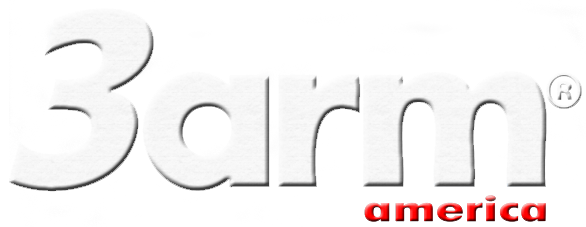In industrial workplaces across the country, skilled tradespeople—from aerospace technicians to automotive assemblers—rely on their bodies as much as their expertise. But in environments where heavy tools, repetitive motions, and overhead tasks are part of the daily grind, the physical toll can quietly mount over months and years.
The result? Musculoskeletal disorders (MSDs), chronic pain, and, for many, early exits from the careers they’ve built with their hands.
At 3arm, we believe it doesn’t have to be this way.
The Human Cost of Industrial Fatigue
According to the U.S. Bureau of Labor Statistics, MSDs account for nearly 30% of all workplace injuries requiring time away from work. The leading causes include overexertion, repetitive motion, and awkward postures—risk factors that are often built into industrial tasks such as drilling, fastening, and material handling.
The National Institute for Occupational Safety and Health (NIOSH) identifies the arms, shoulders, neck, and lower back as the most frequently affected areas. Over time, these injuries don’t just reduce productivity—they can force workers into early retirement, limit career advancement, and in some cases, lead to long-term disability.
This is more than a safety issue. It’s a human one.
Tools That Protect Workers, Not Punish Them
Ergonomic solutions like the 3arm lift assist device are designed to offload the physical burden of tool handling—without compromising on precision or control. By absorbing the weight and torque of heavy tools, 3arm units reduce the strain on joints, muscles, and connective tissue, particularly in overhead and extended-reach applications.
A 2021 ergonomics study published in Applied Ergonomics found that support arms significantly reduce muscle activation levels in the upper limbs, especially during sustained tool operation. Less muscle strain means fewer injuries, lower fatigue, and more sustainable long-term performance.
At its core, that’s what 3arm offers: a way for workers to do their jobs without sacrificing their bodies.
The Long-Term Value of Career Longevity
Occupational health experts have long emphasized that injury prevention is also an investment in workforce longevity. When companies provide ergonomic equipment, they’re not just lowering OSHA recordables—they’re helping people stay in the trades longer, healthier, and happier.
According to the Centers for Disease Control and Prevention (CDC), ergonomic improvements can increase employee retention and reduce turnover, especially in aging workforces. This is particularly relevant today, as industries like aerospace and manufacturing face skilled labor shortages and an aging talent pool.
By using ergonomic assist devices like 3arm, companies are not only protecting their current workers—they’re ensuring their knowledge and experience stays in-house longer.
Empathy in Engineering
At 3arm, we design with intention: to make life better for the people who build, fix, assemble, and create. Every arm is a nod to the technician lifting an impact wrench above shoulder height for hours, the assembly line worker positioning tools in tight, repetitive spaces, or the welder navigating fatigue on long shifts.
These are the team members you rely on. And their health matters.
Learn More
If you’re looking to improve worker wellbeing and prevent avoidable injuries in your facility, explore these helpful resources and product solutions:
- How to Improve Assembly Line Efficiency and Safety with Ergonomic Reach and Mobility Solutions
- Let Torque Arms Take the Force of Torque-Driving Applications
Build Your Own Lift Assist Arm: Top Factors in Selecting Equipment
Don’t let pain become part of the job description.
Invest in technology that protects hands, backs, and futures—because careers should be built to last.

